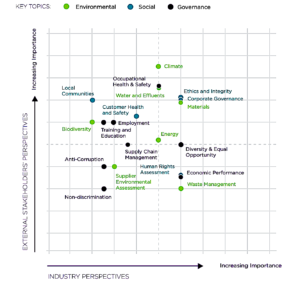I’ve been seeing so many open positions that are linked to company Environmental, Social and Governance (ESG) reporting on my LinkedIn timeline. ESG investing remains a very hot topic, particularly in light of the clear evidence that companies with higher ESG ratings are outperforming their peer group.
I am not well versed in the ESG type of reporting especially when it comes to the financing aspect of this topic. However, it is evident that many investors are more attracted to companies that are providing a positive impact on society and the environment while still being competitive. A recent Morningstar report examining the long-term performance of 745 Europe-based sustainable funds revealed that 6 out of 10 sustainable funds have delivered higher returns than counterpart conventional funds. In the USA, Morningstar reported that once again, sustainable funds in the United States attracted an all-time record level of fund flows in the second quarter of 2021.
Back to my headline, public company Amyris recently published its inaugural ESG report. As I typically focus more on the environmental aspect of a company’s business, Amyris compared year-over-year its energy consumption, greenhouse gas emissions comparison, waste production and water consumption at its sites in Emeryville (headquarters), Leland (squalene production) and Campinas in Brazil (farnesene production) as well as those of its contract manufacturers.
Amyris said it has broken ground on a new production plant that is located next to Raízen’s sugar mill at Barra Bonita, Brazil. The focus of this new plant will be the manufacture of several molecules, including Reb M zero-calorie sweetener. By building the production plant next to Raízen’s sugar mill, Amyris said it will also reduce carbon emissions by eliminating the need for any transport of the feedstock by truck.
The Leland facility, meanwhile, has implemented process improvements to increase Amyris’s energy efficiency, including consolidating production steps and retrofitting equipment, such as replacing older glass-lined vessels with stainless steel. This plant is considered a small quantity emitter and in spite of productivity increases, emissions reportedly have remained very low.
Some other interesting tidbits of information from the ESG report:
- Amyris’s Biosilica™, an alternative to silica which is widely used in the cosmetic industry, is made from sugarcane ash.
- Amyris’s sugar feedstock supplier, Raizen, has been replacing traditional pesticides with bio-pesticides and repurposing vinasse, a by-product of yeast fermentation, for use as fertilizer.
- The company’s consumer brands, including Biossance and Pipette, have replaced non-recyclable materials used in bottles, tubes, caps and other packaging with recyclable materials including PCR plastics and bottles manufactured using sugarcane ethanol. The outer boxes for many Biossance, Pipette and Purecane products are made from sugarcane pulp, a byproduct of sugarcane processing.
- Amyris’s developed ingredients are shipped in recyclable totes, jerricans and drums. For shipments of key intermediates, Amyris implemented the use of flexitanks, which are recycled after use and have negated the need for cold shipments.
- Over 90% of the hazardous waste produced in its Emeryville laboratory facilities is recycled or burned to produce energy. Liquid waste from the fermentation process is repurposed for dust control at Amyris’s waste management partner in Albuquerque.
- In 2020, the Leland plant recycled over 300 metric tons of isopropyl alcohol (IPA), a byproduct of the squalane manufacturing process, and was shipped an additional 60 metric tons of IPA to companies that reuse the chemical in products such as window cleaner.
By the way, I recommend reading this article from Joel Makower of Greenbiz, “Inside the war for ESG talent.”




